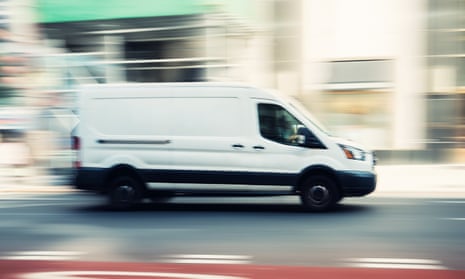Van Emissions: A Growing Problem
Carbon emissions from vans in the UK are on the rise, contrasting with the trend of cleaner cars.

Diesel vans often struggle at public charging stations due to size constraints or inadequate cable length.
Since 1990, van emissions have increased by a staggering 63%. This is quite the opposite of the trend seen in cars and taxis, which have seen a reduction in emissions by 19% during the same timeframe, even with a greater overall number of vehicles on the road. The concerning growth in van emissions has been linked to the increased use of diesel vans, a preference driven by cost limitations, and limited options in the electric van market. Many individuals and small companies who are interested in electric vans face challenges with the limited availability of charging stations and the infrastructure’s design, specifically charging cables that are too short.
These vans are used frequently by small businesses and individual operators.
Although the uptake of electric vehicles is growing, vans still rely primarily on diesel.
The Challenge of Electric Vans
In contrast to the advancements in electric cars, van drivers still predominantly use diesel vehicles. This preference is due to the greater cost of electric vans, combined with a limited selection of models available.
Charging electric vans poses an additional difficulty, as some public charging stations have size or cable constraints.
Campaigners advocate for financial incentives for businesses to select zero-emission vans.
Infrastructure and Policy
Advocates suggest that the government should provide financial incentives to encourage businesses to switch to zero-emission vans and enhance charging infrastructure to overcome current hurdles.
The UK lags behind European countries such as the Netherlands, which is moving to implement zero-emission logistics zones. By 2030, these zones mandate that all vehicles must be electric.
The ZEV Mandate
The government has implemented a zero emission vehicles (ZEV) mandate that requires 10% of new van and car sales to be electric by the end of this year, increasing to 100% by 2035. The Society of Motor Manufacturers and Traders reported that 20,253 electric vans were registered in the last year out of new van registrations of 341,455.
The ZEV scheme has flexibility to automakers, making the 10% target unlikely this year but potentially accelerating the variety of van models accessible to the market.
Openreach’s Electric Transition
Openreach, a subsidiary of BT, plans to convert its fleet of 30,000 vans to electric by 2031. Despite some vehicles not having sufficient range, the ZEV mandate is seen as a step forward.

Openreach is working to convert its fleet of vans to electric by 2031.
Openreach has already made progress by deploying 4,100 electric vans with support from government grants.
While Openreach has set up charging stations at 2,000 of its engineers’ homes, further improvements are required to public charging infrastructure.
Charging facilities should be improved to better fit for vans, addressing issues such as restricted parking, insufficient cable lengths, and physical barriers.


